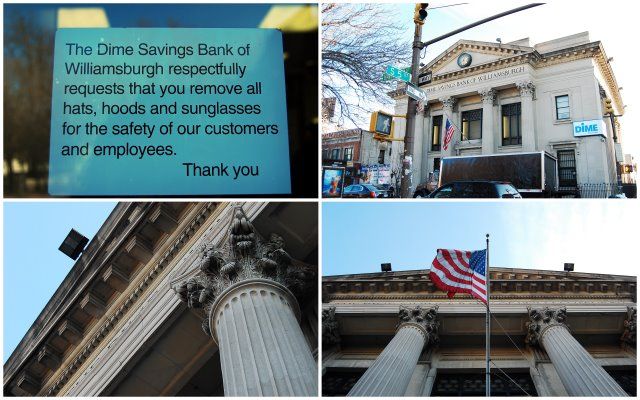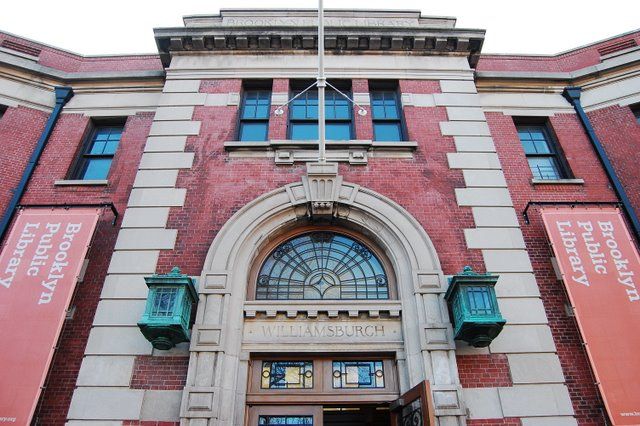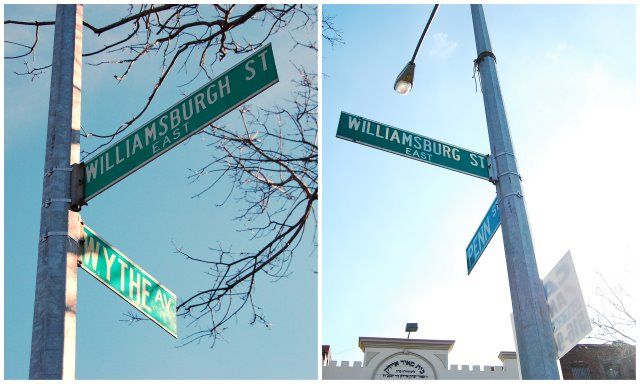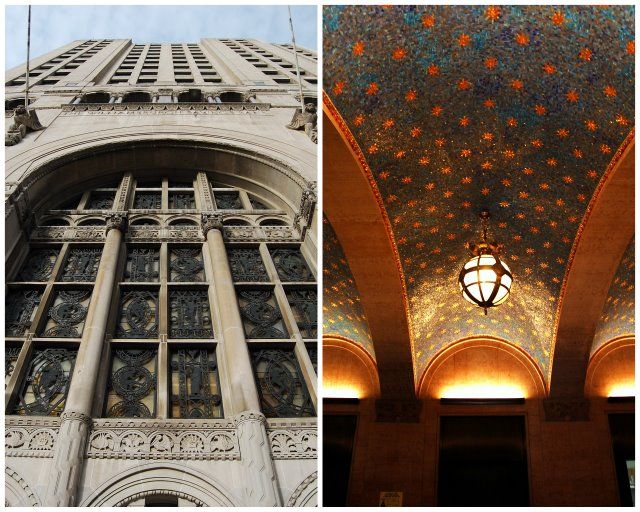An Original Stone Eagle Comes Home to Penn Station in NYC
A 7,500-pound eagle sculpture from the top of the original 1910 Penn Station building has been returned after years in hiding!


Did you know Williamsburg used to have an “h”? This week’s entry is a cross-post with Gotham Lost and Found, an insightful blog by David Freeland, author of Automats, Taxi Dances, and Vaudeville: Excavating Manhattan’s Lost Places of Leisure

. On a recent afternoon, David and I trekked across the river to the Marcy Avenue subway station (J/M/Z line) in Brooklyn, our starting point for an exploration of Williamsburg, one of Gotham’s most diverse and intriguing neighborhoods. New York City’s toponymological evolution can often be traced in the design of its buildings; and today, specifically, we were looking for physical signs of Williamsburg’s original 19th-century spelling: “Williamsburgh.”

Our first stop was the Dime Savings Bank of Williamsburgh (at the corner of Greek revival edifice whose frieze, set above a line of Corinthian columns, is inscribed with the bank’s full title — including the final “h.” Across the park at 175 Broadway is the domed Renaissance-inspired HSBC Bank, the original headquarters of the Williamsburgh Savings Bank built in 1870-75. The landmarked building fortunately preserves some of the original signage. According to most historical accounts, the “h” was dropped after Williamsburg became consolidated with Brooklyn in April of 1854. One of the more interesting footnotes unearthed during research for this post was the argument, expressed by an editorialist in the Brooklyn Eagle of June 6, 1853, that with consolidation, “we should also be much better able to stand against the oppressive measures of the big city over the river.” Of course, all of Brooklyn was eventually incorporated into that city, in 1898.

Making our way past 1930s housing developments and 19th-century row houses (a few of which were being replaced, evidently for new construction), we landed at the Williamsburg branch of the Brooklyn Public Library (built in 1903 at Yiddish (which is spoken by the Satmar Hasidim who comprise one of the neighborhood’s most populous social groups). Outside I took a few photos of the imposing Classical Revival facade, but was then stopped by a security guard. David was reminded of the many insidious ways in which New York has become a city of “don’ts.” Few of these proscriptions make any logical sense; they stifle the expressive freedoms for which New York has always been known. After pointing out to the guard that there is no law preventing buildings being photographed from the outside, we moved on.

If “Williamsburgh” did indeed become “Williamsburg” after consolidation, evidence suggests that the two spellings were used interchangeably for a long time. Even today, an “h”will sometimes appear in printed references to the neighborhood. This confusion was made manifest as we strolled along Williamsburg Street, half of which seems to have been lost to the expressway which runs parallel to it. A street sign announcing “Williamsburg St” sat one block away from one that proclaimed “Williamsburgh St”; the signs appeared to be about the same age, of relatively recent design and placement. If “Williamsburgh” has indeed been removed from the New York lexicon, it is having a serious case of departure anxiety.
We ended our tour at the Williamsburgh Savings Bank tower near the Brooklyn Academy of Music (BAM) downtown, for the documentation of one final “h” (above the central arch) and a view of some exquisite tile mosaics in the lobby. Still the tallest building in Brooklyn, the tower’s landmark status helps ensure that “Williamsburgh” will not disappear any time soon. It is currently being converted into condos, which despite anti-gentrification proponents, is sometimes a way to preserve historical architecture — in this case, 63 ft vaulted ceilings, marble interiors and 40 ft ornamented windows. And in the tradition of preservation — this building did not generate any media or internet presence until after 2007, when it closed and was sold to developers.

How to Get There:
Dime Savings Bank J/M/Z Subway to Marcy Avenue
Williamsburgh Savings Bank 2/3/4/5/B/D/M/N/Q/R Subway to Atlantic-Pacific
Subscribe to our newsletter